Molokini Marine Life Conservation District has been a protected sanctuary for marine life for over 43 years. It is open to anyone lucky enough to have a boat or kayak or outrigger canoe. No anchoring is allowed. A permit is required to operate a commercial vessel there. And all visitors, snorkelers, and divers must read and sign a 300-word acknowledgment form stating they will not feed fish, and among other things, that they will not touch anything on land or underwater. Most boat operators supply reef safe sunscreen and educate their passengers about Molokini’s spectacular coral reefs – some of the healthiest in the state as shown by DLNR surveys conducted over many years.
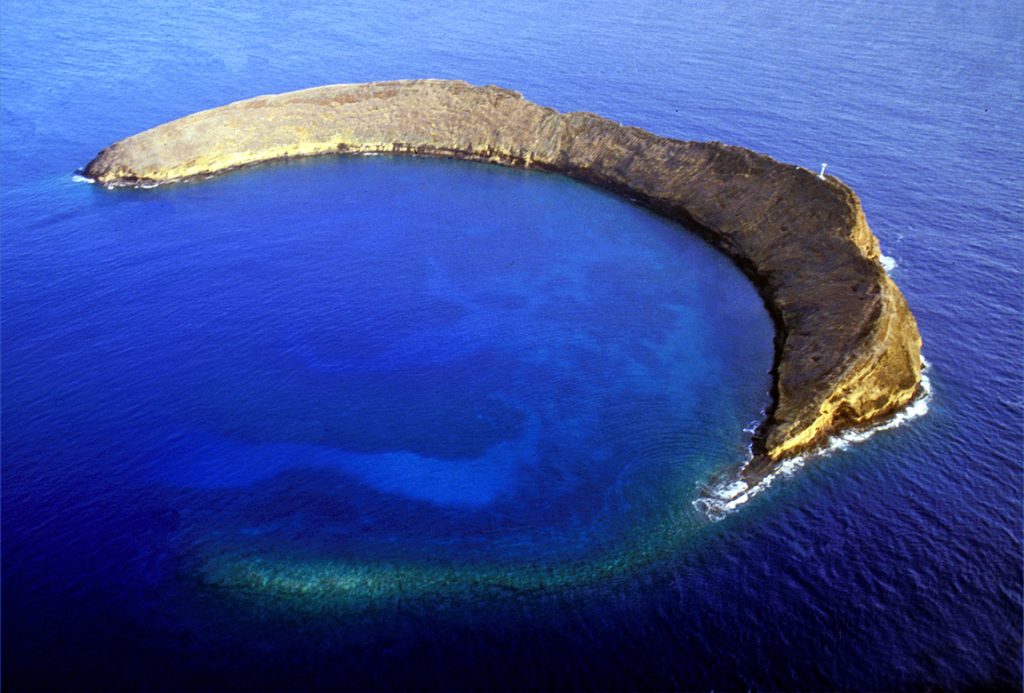
But during WWII Molokini was used as a practice target for air and sea bombardment. Some ordnance landed inside and some landed outside of the crater. Some of this ordnance was detonated or removed in the 70s and 80s. But two pieces of this ordnance have recently come to the attention of the State Department of Health. They have sat untouched for 70 years in locations that few divers pass by. When the Health Dept. became aware of these last remnants, DOBOR was notified and they contacted the Navy for a resolution.
And how does the Navy plan to resolve the matter? Surely with modern ordnance removal techniques and careful consideration for Molokini’s protected marine life, right? No. Right up until June 26 State agencies acknowledged that the Navy plans to detonate one of the shells in place!
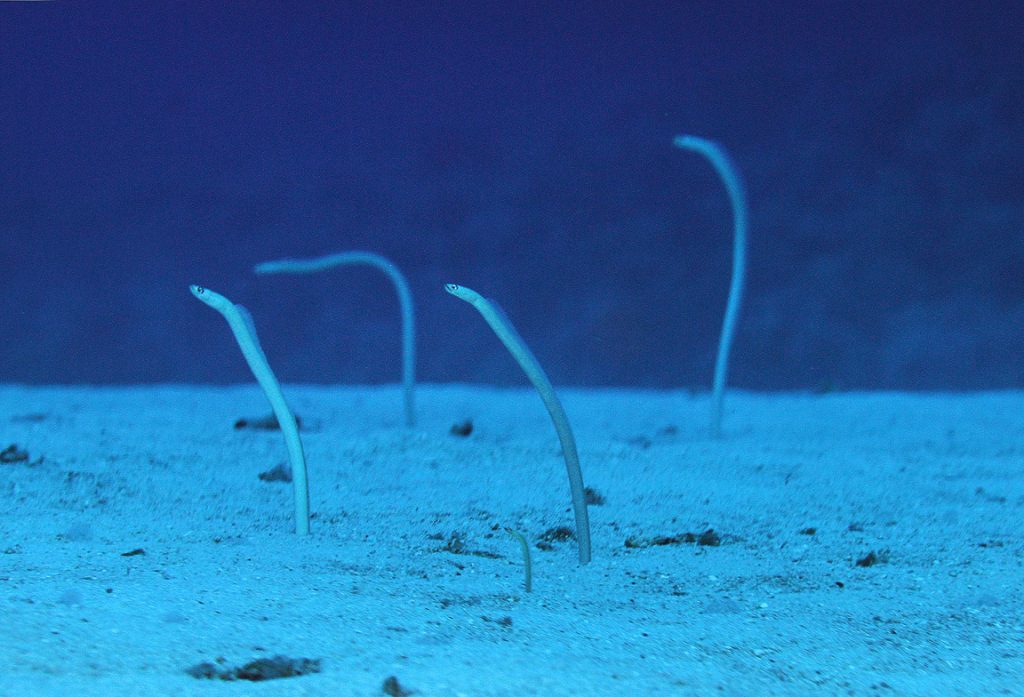
The ordnance reportedly scheduled for detonation is almost completely buried in sand, and is deeper than most recreational divers venture. This aged shell sits among hundreds of garden eels, slender worm-like eels that gracefully pick plankton out of the water. Also close by are a rare species of conger eel, flounders, mollusks, worms and hermit crabs. These are just a few of the hundreds of species of sand occupants within feet of the ordnance.
Also mere feet away is spectacular living coral reef which has grown inside Molokini for hundreds or thousands of years. Called a climax coral reef, this one is dominated by two species of corals: rice coral (Montipora capitata) and spreading coral (Montipora patula), a combination rarely seen in Hawai’i. Destroying even a small part of this would be a travesty.
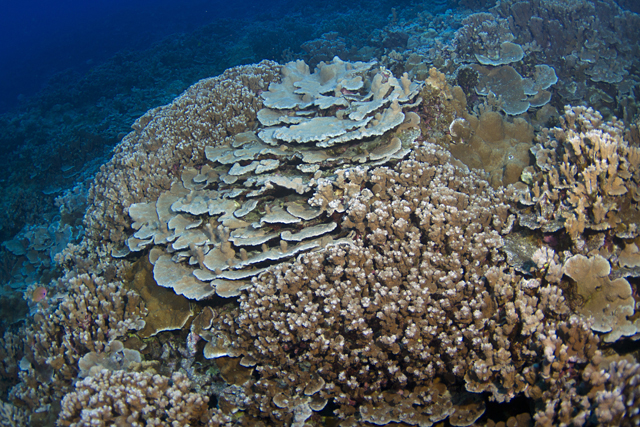
What we know from past Navy detonations at Molokini
If this detonation went forward we would expect extensive damage to this reef and its inhabitants based on reports of detonations that took place at Molokini in the 1970s and 80s. First-hand accounts, newspaper articles, photographs and even scars still visible on the bottom today all bear witness to the appalling consequences.
The first detonating of ordnance at Molokini took place forty-five years ago. The July 1975 detonation produced a crater 15 feet across and 10 feet deep according to Robert Chambers, at the time owner of Hawaiian Pacific Divers of Maui. He reported that damage extended to a radius of 100 feet, adding, “Coral and fish are dead.” (1)
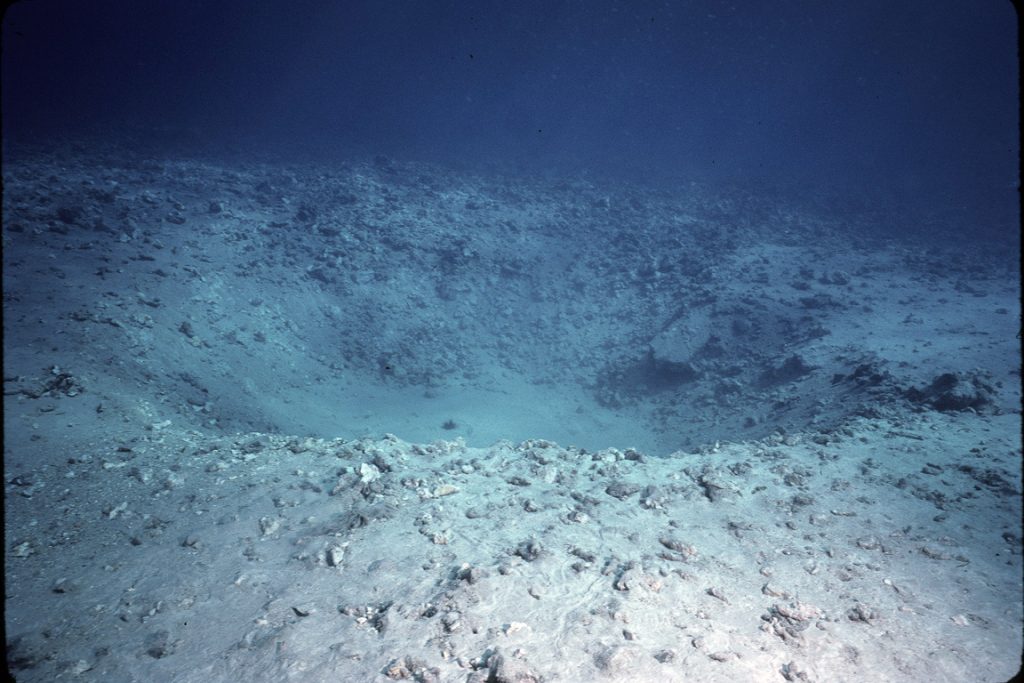
The Navy did it again in Sept. 1984. The resulting damage was even worse this time. It was estimated that a hundred square yards of coral reef had been blown up (2). I’ve dived in this blast area over the years and the bottom is pulverized coral, almost like talcum powder. No new coral larvae can attach to this, and so it remains in this state 30+ years later.
In addition, thousands of fish were killed, and seen laying on the bottom.
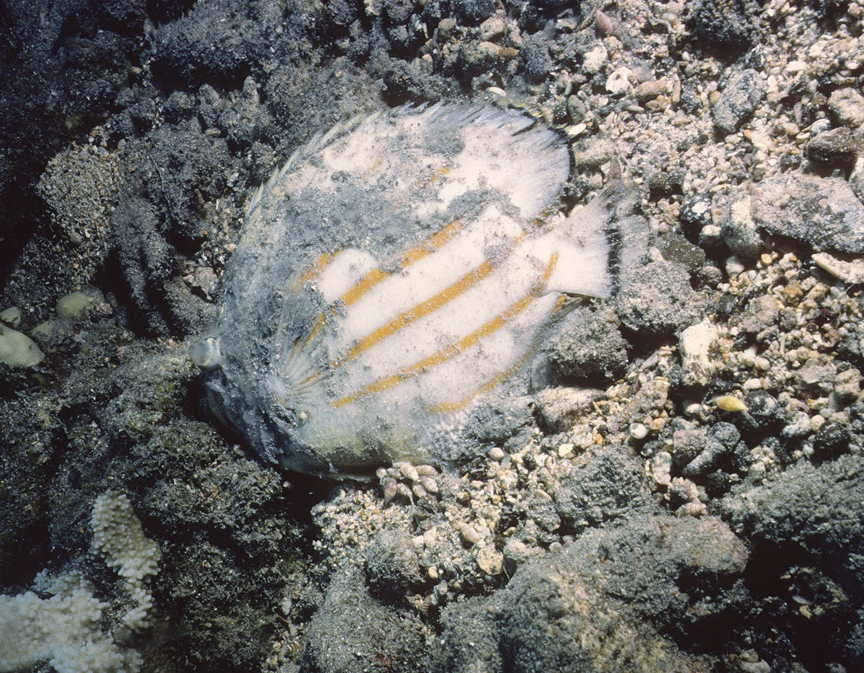
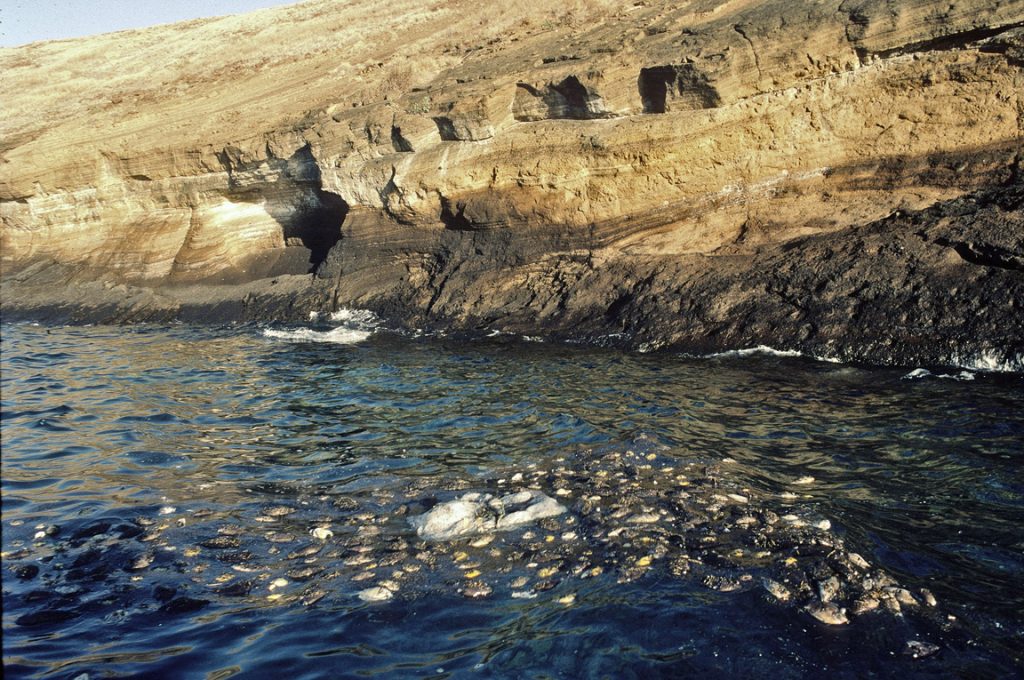
Thousands more floated to the surface and accumulated in windrows inside and outside the crater. There were numerous reports of sharks attracted to the area for several days due to the presence of the dead fish. (2)
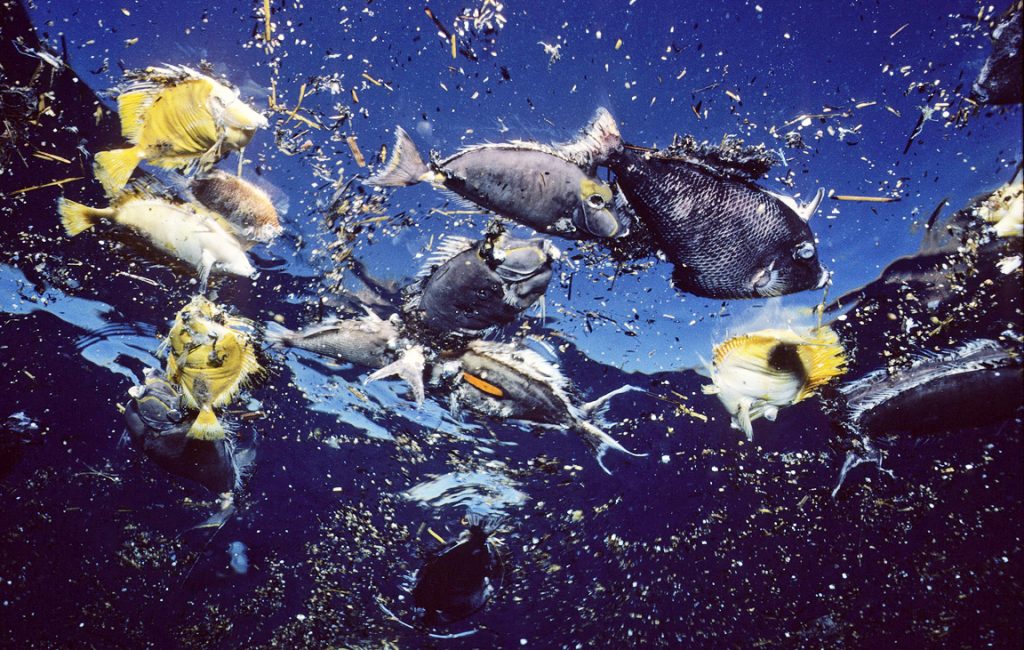
Incensed, divers and boaters asked why the Navy detonated the bombs instead of towing them out to sea. The Navy spokesman responded, “the diving officer said it was too dangerous to attempt to remove them because they were heavily encrusted in the coral.” (3) Well, the current shell in question is not heavily encrusted in the coral at all. It is buried in the sand.
At the announcement of those upcoming Sept. 1984 detonations divers took action. They tied lines around two bombs themselves and towed them out of Molokini, dropping them in deep water before the Navy was scheduled to explode them. (4)
Progress came four years later in Aug. of 1988. Newspaper accounts suggest that the Navy apparently removed three bombs without detonating them. The goal was for “frogmen to attach balloon-like floats to the WWII-era bombs to bring them to the surface for transportation to deeper waters.” (2)
Dave Padgett, at the time a boat captain and head of Ocean Activities Center, approved of the Navy towing the ordnance out instead of detonating it. Local boaters had surreptitiously done this themselves over the years. He was quoted at the time as saying “We’ve removed 14 of these ourselves without incident.” (2)
What alternatives exist
So, if the Navy was able remove some ordnances without detonating them in 1988, and if boaters removed 14 on their own without authorization, would removal also be possible in the case of this one 4-foot-long ordnance?
Or, could the Navy remove it using remote technology if it were deemed a greater risk than all these others that were safely towed out and dropped in deeper water without incident?
Or, instead of the Navy could the Army Corps of Engineers handle it through their FUDS (Formerly Used Defense Sites) program where they investigate, and if required, clean up munitions?
Or, could the State hire a private company as was done in Rota in the Northern Mariana Islands? After the US Navy detonated old munitions there causing $82 million worth of damage to the reef, the govt. hired a private company that accomplished the removal with no damage to the reef. A private company has stepped forward to do just that at Molokini.
There must be a remedy here that will not result in the deaths of thousands of sea creatures and the destruction of corals and eco-systems. Jim Housh, Maui ocean activist, said in 1988 “You’d hope the technology exists to dispose of these without destroying a resource such as Molokini. (2)
Yes, Jim, we would hope that. Especially in 2020.
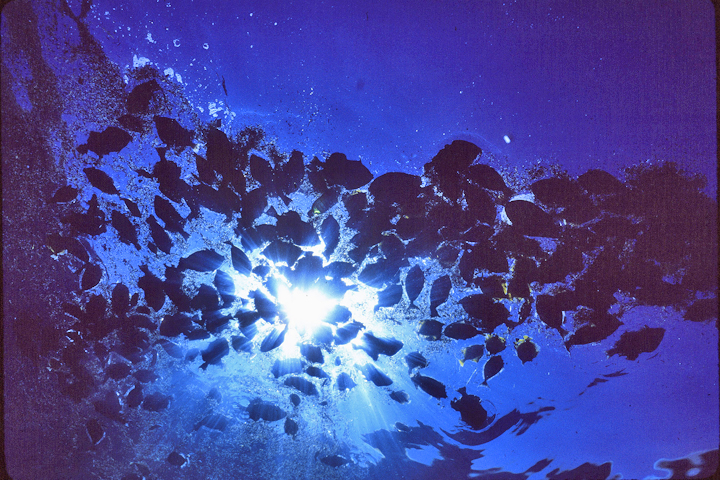
Click here to Save Molokini Now
Written by Pauline Fiene, photos as credited. Thanks to Mike Severns, Ed Robinson, Don Burns and John Starmer for information and first-hand accounts of the events that took place at Molokini in 70s and 80s. And sincere thanks to Ed Robinson for taking and digging up such extremely rare photos. They say more than any written description could.
*****************************
https://mauinow.com/2020/06/26/concerns-raised-over-remediation-of-wwii-era-bombs-at-molokini/
(1) “2 Bombs Explode Into Spat.” Honolulu Advertiser, July 29, 1975. A6.
(2) “Navy trying to remove Molokini bombs.” Honolulu Star. Bulletin, Aug. 10, 1988, A6.
(3) “Molokini Blasts Rile Ma’alaea Charter Operators.” Honolulu Advertiser, Sept. 13, 1984, B11.
(4) “Plan for Detonation off Molokini Island.” Honolulu Star Bulletin, Nov. 15, 1984, A23.

Comments 14
Those photos speak volumes. If this nuclear option is the only viable one, the Navy owes an explanation as to why. Otherwise, maybe these alternatives you were kind enough to research will jog their creativity.
It’s inspiring that locals took the matter into their own hands to tow some of these away themselves. Short of that, I’m wondering if there’s at least a politician we might contact to voice our concerns.
Author
http://WWW.SAVEMOLOKININOW.ORG
Senator Kai’alii Kahele. Yes to investigate the Navy to stop the bombing
.
Thank you Pauline Fiene for the information and education! This doesn’t feel right at all and I’m with you. Why not look at all the alternatives? It doesn’t make sense to plan an explosion while simultaneously studying the marine life activity at Molokini Crater during the pandemic to help with management of the site. Which is it? Do we care or don’t we care about the marinelife? Obviously public safety is a concern, but if alternatives exist to safeguard the reef, why not do that instead.
This is awful. How can the navy even contemplate this destruction. Is there a number to call to protest? Is there an email address? I remember decades ago calling and calling every time the navy was bombing Kahoolawe.
I’m going to try and send this to the mayor’s office. Molokini is part of Maui County. This detonation must be stopped!
OMG.
I remember going to Molokini that day in 1984 and seeing hundreds of dead trigger fish on the surface and sharks everywhere.
Because Boaters had been surreptitiously removing ordinance, the Navy decided to not give anybody any more than Overnight notice.
in those days (without an Internet) some of us operators went to the crater that day, only to find it completely devastated and unsafe.
It’s unconscionable that there’s no institutional memory to recognize what a clusterf*#@ this was
Please post contact info we can use to protest this insanity! This is totally unacceptable!
Author
Call to action will come out today. Thank you!!
THANK YOU!!!!
Author
http://WWW.SAVEMOLOKININOW.ORG
I vividly remember the devastation caused by the Navy’s detonation of old ordinance in Molokini in the mid-70’s. Not only were fish and coral obliterated, but graceful manta rays no longer returned to their long term cleaning station after the explosions.
Vigilante action by concerned divers removed over a dozen other pieces of unexploded ordinance, without incident, to prevent further destruction in the crater. The fact that those pieces could be carefully towed out into deeper water suggests that there is another way for the recently discovered ordinance to be removed without causing further destruction to the fragile ecosystem of Molokini.
It is time for the DLNR to start thinking outside the box, and remembering their mission statement:
“Enhance, protect, conserve and manage Hawaii’s unique and limited natural, cultural and historic resources held in public trust for current and future generations of the people of Hawaii nei, and its visitors, in partnership with others from the public and private sectors.”
There is another solution! They removed them before and towed them to deeper water. It’s 2020!!! DO NOT DAMAGE the inhabitants of MOLOKINI !!!!
Please find another solution.
Mahalo Pauline, for shedding the light in places where underwater is under the radar. Those photos from previous detonations tell the story.